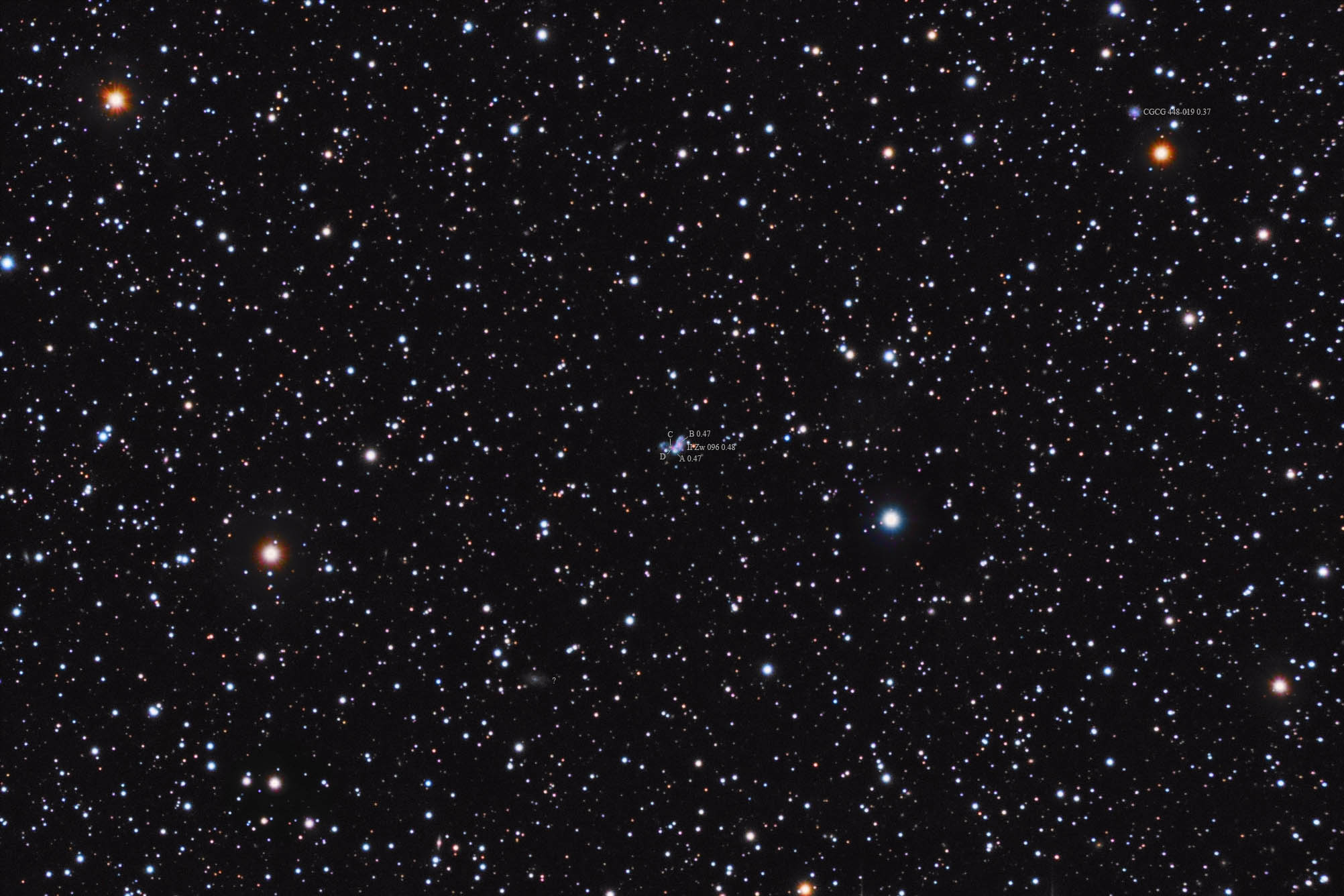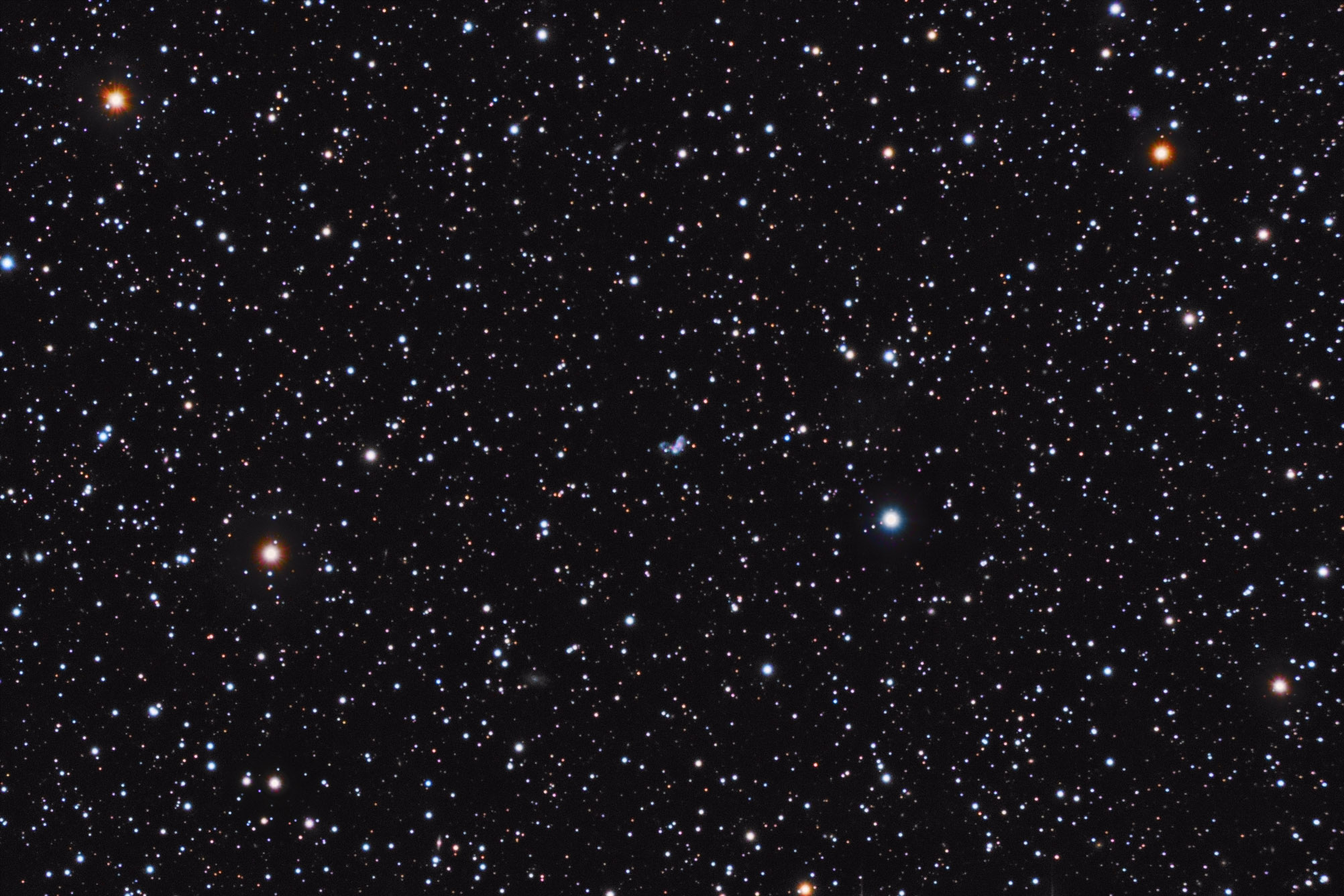| Description | Images |
Object name: PGC65779Designation(s): PGC65779, II Zw 096/PGC 65779 as a collision of at least two galaxies in Delphinus east of the dolphin's nose. Redshift puts it about 470 to 480 million light-years away. Oddly NED gives the greater value to the pair and the lesser to both individually which makes no sense to me. The II Zw catalog lists four objects under the II Zw 096 designation. The annotated image points to the A, B, C and D objects. Oddly while C and D point to a region of massive star formation (C) and a potent H alpha region (D) there's no designation for the huge arc of stars to the east. Spitzer and the HST have studied this mash-up. I'll save my fingers and point you to their page on it at http://www.spitzer.caltech.edu/images/3432-sig10-023b-Hubble-View-of-Galaxy-Merger-II-Zw-096 . Related Designation(s):AKARI J2057242+170740, C-GOALS 37, CGCG 2055.0+1655, CGCG 448-020, CGPG 2055.0+1655, II Zw 096, IRAS 20550+1656, IRAS F20550+1655, PGC 065779, PGC65779, [DJ2011] 23, | Permanent link: https://images.mantrapskies.com/catalog/OTHER/PGC65779/PGC65779L4X10RB2X10G1X10CROP125.JPG Permanent link: https://images.mantrapskies.com/catalog/OTHER/PGC65779/PGC65779L4X10RB2X10G1X10ID.JPG Permanent link: https://images.mantrapskies.com/catalog/OTHER/PGC65779/PGC65779L4X10RB2X10G1X10R.JPG |




